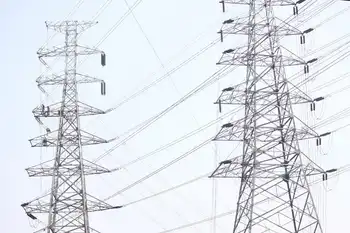Price comparison proposal gets zapped
TORONTO, ONTARIO - A proposal that would require electricity retailers to give consumers a side-by-side price comparison, showing what they would pay with or without an energy contract, has been quietly ditched by the Ontario government.
Unscrupulous energy contract salespeople have made the provinceÂ’s top-10 list of consumer complaints for years.
In response, the province passed the Energy Consumer Protection Act, which is due to come into force January 1.
One of the stated goals of the act is “providing greater fairness and transparency for consumers through rate comparisons.”
Last December, the province released for discussion a draft “electricity retail contract information” form that retailers would be required to give prospective customers.
The form included a side-by-side comparison of what a consumer could expect to pay for the next year if he or she stayed with the provincially regulated price, and what he or she would pay under a retail contract. The price comparison was based on consumption of 800 kilowatt hours a month.
But that proposed form has now disappeared from the Ministry of Energy website.
The task of drafting new rules for energy retailer is now in the hands of the Ontario Energy Board, which has drafted its own consumer information form. But the boardÂ’s form, too, lacks a side-by-side price comparison.
A spokesman for Energy Minister Brad Duguid said the side-by-side comparison form was removed from its website “to avoid confusion” with energy board proposals.
Julie Girvan, energy consultant for the Consumers Council of Canada, said direct price comparisons are helpful for consumers.
“Any information that can help consumers make comparisons is useful, and I think it’s important,” Girvan said in an interview.
Electricity bills are hard to understand, she said, and the energy board and utilities should be focusing more on educating consumers about them:
“We all need to step back and think about what’s useful for consumers.”
She noted that the new act was passed because consumers have frequently been confused or misled.
Alan Findlay, spokesman for the energy board, said the form is intended to set out “key pieces of information” for consumers.
Findlay said itÂ’s difficult to make direct price comparisons. The regulated price is adjusted regularly, he said, so itÂ’s impossible to say with certainty what the price will be in a yearÂ’s time.
Time-of-use pricing also makes comparison hard, he said, since consumers who use a lot of power at peak periods will pay more than those who donÂ’t.
Similarly, the “provincial benefit” – an extra charge added to fixed price contracts – changes monthly, so it can’t be projected into the future.
For the first six months of this year, the provincial benefit has been about 3 cents a kilowatt hour. That means if you signed a contract for a fixed price of 7 cents a kwh, youÂ’d pay a total of 10 cents a kwh, plus delivery, regulatory and debt retirement charges.
Consumers interested in making direct price comparisons can go the boardÂ’s website, Findlay said. It has a calculator that allows consumers to compare retailer prices with non-contract price.
The role played by energy retailers in dropping the side-by-side comparison is hazy.
The province asked for comment on its proposed information forms, and said comments received would be on the public record.
But the ministry website says comments received from retailers did not come in a form that could be uploaded onto the website, so they canÂ’t be viewed.
Tanis Kozak, general manager of retailer Direct Energy, said her firm had made a submission, but didnÂ’t say whether the firm asked for the direct price comparisons to be dropped.
“Direct Energy has already proactively introduced meaningful new consumer protection initiatives including plain language contracts and disclosure statements,” she said in a written statement.
“Our priority is to ensure the Ontario market is best-positioned to deliver on the benefits of competitive energy markets to consumers while protecting consumer interests at the same time.”
In backing away from requiring direct, side-by-side comparisons, the province is moving in the opposite direction from other retail sectors.
The federal government, for example, has adopted new rules requiring credit card companies to spell out what it will cost customers if they donÂ’t pay off their balance promptly.
Related News

Victims of California's mega-fire will sue electricity company
LOS ANGELES - Victims of California's most destructive wildfire have filed a lawsuit accusing Pacific Gas & Electric Co. of causing the massive blaze.
The suit filed on Tuesday in state court in California accuses the utility of failing to maintain its infrastructure and properly inspect and manage its power transmission lines.
The utility's president said earlier the company doesn't know what caused the fire, but is cooperating with the investigation by state agencies.
PG&E told state regulators last week that it experienced a problem with a transmission line in the area of the fire just before the blaze erupted.
A landowner near where…




